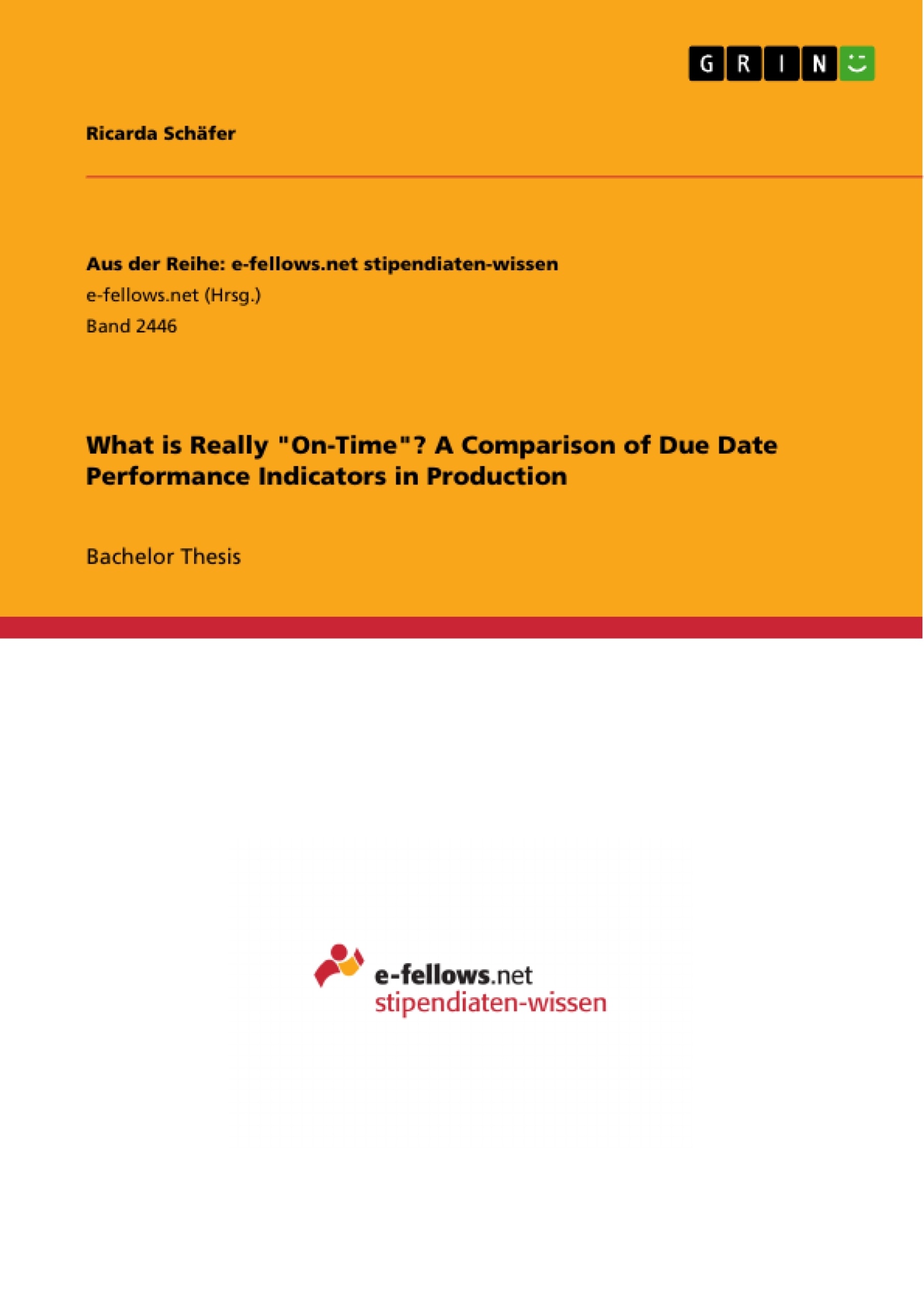On-time delivery is essential in today’s dynamic conditions: if a company cannot produce and deliver on time, it has to make up for it by using high cost express delivery or faces customer dissatisfaction. One factor influencing the delivery reliability is the due date performance (DDP) within production. Although the significance of DDP has been established, the question of how to measure it remains. A review of existing literature shows the vast amount of different DDP measures (lateness, relative lateness, tardiness, schedule reliability, etc.). The purpose of this paper is to compare different DDP measures used in manufacturing in order to assess their interrelationship, so that companies are better able to understand the impact of their choice of measure. A review of DDP measures described in literature is performed, followed by statistical analysis of the relations between those measures computed on production feedback data from four real-world manufacturers. The results indicate that there exist differences across DDP measure groups. Further research is needed to assess the benefits of each measure in a given situation.
Inhaltsverzeichnis (Table of Contents)
- Introduction
- Problem of the thesis
- Aims of the thesis
- Methodological Framework
- Literature Review
- Background and Definitions
- Overview of Due Date Performance Measures
- Output Lateness, Absolute Lateness, Squared Lateness and Tardiness
- Relative Lateness
- Binary Lateness and Schedule Unreliability
- Classification Approach
- Methodology
- Data Overview & Data Cleaning
- Lateness Computations
- Interrelationship Analysis
- Findings
- Lateness Computations
- Interrelationship Analysis
- Discussion
- Results and critical reflections
- Implications for further research
- Implications for practice
Zielsetzung und Themenschwerpunkte (Objectives and Key Themes)
This thesis investigates the concept of "on-time" performance in production by comparing different Due Date Performance Measures (DDPMs). The aim is to analyze the relationships between these measures and their implications for practical application.
- Analysis of various DDPMs in production
- Evaluation of the effectiveness of different DDPMs in representing "on-time" performance
- Identification of relationships between different DDPMs
- Implications for practical application of DDPMs
- Suggestions for further research in the field of DDPMs
Zusammenfassung der Kapitel (Chapter Summaries)
- Introduction: This chapter introduces the problem of defining "on-time" performance in production and outlines the aims and methodological framework of the thesis.
- Literature Review: This chapter provides a comprehensive overview of existing literature on DDPMs, including definitions, classifications, and a critical review of existing research.
- Methodology: This chapter describes the methodology used for data collection, data cleaning, and analysis, including specific details on the computation of lateness measures and interrelationship analysis.
- Findings: This chapter presents the results of the lateness computations and interrelationship analysis, revealing insights into the relationships between different DDPMs.
- Discussion: This chapter discusses the findings of the study, offering critical reflections on the implications for further research and practical applications.
Schlüsselwörter (Keywords)
Due Date Performance Measures, Lateness, Production, On-time Delivery, Supply Chain Management, Data Analysis, Interrelationship Analysis, Empirical Research, Practical Implications.
- Quote paper
- Ricarda Schäfer (Author), 2016, What is Really "On-Time"? A Comparison of Due Date Performance Indicators in Production, Munich, GRIN Verlag, https://www.grin.com/document/370576



